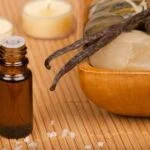Aromatherapy oils have gained tremendous popularity in recent years for their potential to promote relaxation, relieve stress, and enhance overall well-being. But how do these oils actually work? What is the science behind their therapeutic benefits? In this article, we will delve into the intriguing world of aromatherapy oils and explore the mechanisms that make them such powerful tools for holistic healing.
The use of aromatic plants and their extracts can be traced back thousands of years, with ancient civilizations like Egypt, China, and India harnessing the power of fragrances for medicinal purposes. Today, our understanding of aromatherapy has greatly evolved, blending traditional knowledge with modern scientific research. By examining the origins of aromatherapy as an ancient healing tradition, we can gain insights into its profound impact on human health and well-being.
Essential oils are at the heart of aromatherapy. These potent liquids are derived from various parts of aromatic plants through processes like steam distillation or cold pressing. They contain highly concentrated volatile compounds that lend each oil its unique aroma and therapeutic properties. We will explore these essential oils in detail and unravel how they interact with our body’s chemistry to produce remarkable physiological and psychological effects.
Understanding the science behind aromatherapy oils involves uncovering their interaction with our brain chemistry. Scent molecules have a direct pathway to our limbic system – the area responsible for emotions, memory, and mood regulation.
By influencing this intricate network of neurons and receptors, essential oils can evoke emotional responses and alter our state of mind. Furthermore, we will delve into how our body physiologically responds to inhalation or topical application of these oils, uncovering the role played by olfactory receptors in modulating bodily functions beyond mere scent perception.
Join us on this fascinating journey as we unravel the mysteries surrounding aromatherapy oils – from their historical significance to molecular structures; from different application techniques to the debunking of common myths. By the end of this article, you will have gained a comprehensive understanding of the science behind aromatherapy oils and be inspired to tap into their potential for your own well-being. The power of these natural remedies awaits, ready to transform your life.
The Origins of Aromatherapy
Aromatherapy, often regarded as a modern wellness trend, actually has its roots in ancient civilizations. The practice of using aromatic plants and oils for healing purposes dates back thousands of years and can be traced to cultures such as Egypt, China, and India.
In ancient Egypt, aromatherapy was an integral part of their religious and spiritual rituals. Essential oils were used in the embalming process to preserve the bodies of pharaohs and provide a fragrant environment for the afterlife. The Egyptians also developed various methods of extracting essential oils, including distillation and maceration.
Similarly, the use of aromatherapy can be found in traditional Chinese medicine (TCM), which is based on the concept of balancing energies within the body to achieve overall health. Aromatherapy played a significant role in TCM through the use of herbs, flowers, and other plant materials to create remedies that addressed specific imbalances.
In India, aromatherapy forms a part of Ayurveda, an ancient holistic healing system that focuses on maintaining balance between mind, body, and spirit. The Indian culture has long recognized the therapeutic benefits of aromatic plants and their ability to enhance overall well-being.
The historical background of these ancient civilizations clearly demonstrates that aromatherapy has been valued as an effective healing practice for centuries. Today’s interest in aromatherapy is a continuation of this tradition that spans across different cultures and time periods. By understanding its origins, we are able to appreciate the rich heritage behind this powerful wellness tool.
Unveiling the Power of Essential Oils
Essential oils are the foundation of aromatherapy, providing the therapeutic benefits that make this practice so powerful. In this section, we will delve into the basics of essential oils, exploring their definition and extraction process, as well as understanding the concept of aromatherapy and its various therapeutic benefits.
Defining Essential Oils
Essential oils are highly concentrated plant extracts obtained from various parts of plants such as leaves, flowers, bark, and roots. These oils capture the plant’s beneficial properties in a potent form. It is important to note that essential oils are not the same as perfume or fragrance oils, which are often synthetic and lack the therapeutic qualities found in naturally derived essential oils.
The Extraction Process
Essential oils are extracted through different methods such as steam distillation, cold-press extraction, solvent extraction, or enfleurage. Steam distillation is one of the most common methods used, where steam is passed through the plant material to release its aromatic compounds. The steam carrying these compounds then undergoes cooling and condensation processes to obtain the essential oil.
The Basics of Aromatherapy
Aromatherapy is a holistic healing practice that utilizes essential oils to promote physical, emotional, and mental well-being. This practice has been used for thousands of years in various cultures around the world. The therapeutic benefits of aromatherapy come from inhaling or applying essential oils to the skin.
- Inhalation: When essential oils are inhaled, scent molecules enter your nose and interact with olfactory receptors. These receptors send signals to your brain’s limbic system – responsible for emotions and memory – which can trigger mood changes or relaxation responses.
- Topical Application: Essential oils can be diluted in carrier oils and applied topically to target specific areas or enhance overall well-being. When applied to the skin, they may penetrate to deeper layers and provide localized benefits such as reduced inflammation or improved circulation.
Aromatherapy is a versatile practice that can be incorporated into daily routines, whether through diffusing oils in the air, adding them to baths, or applying them during massages. The therapeutic benefits of essential oils are vast and can address a wide range of physical, emotional, and mental concerns. In the next sections of this article, we will explore in more detail how aromatherapy affects our brain chemistry and the physiological response to these oils.
The Role of Aromatherapy in Our Brain Chemistry
The Connection between Scent and Emotions
Aromatherapy has a profound impact on our brain chemistry, particularly in relation to our emotions. The molecules present in essential oils have the ability to interact with the limbic system, which is responsible for regulating emotions and memory. When we inhale the scent of essential oils, these molecules are transmitted to the olfactory bulb, a part of the limbic system located in the brain.
One key component of the limbic system that is directly influenced by aromatherapy oils is the amygdala. The amygdala plays a crucial role in processing emotions and triggering emotional responses. When scent molecules from essential oils reach the amygdala, they can stimulate specific emotional responses, such as relaxation, happiness, or calmness.
Effects on Neurotransmitters
Aromatherapy oils also have an impact on our brain chemistry through their interaction with neurotransmitters. Neurotransmitters are chemical messengers that transmit signals between nerve cells in our brain. They play a significant role in regulating our mood and overall well-being.
Certain essential oils have been found to affect neurotransmitter activity in the brain. For example, lavender oil has been shown to increase levels of serotonin, a neurotransmitter responsible for promoting feelings of happiness and relaxation. On the other hand, citrus oils like lemon or orange can stimulate the release of norepinephrine, which is associated with increased energy and focus.
The Influence on Stress Response
In addition to affecting our emotions and neurotransmitters, aromatherapy oils also play a vital role in regulating our body’s stress response. When we encounter stressful situations, our body releases stress hormones such as cortisol and adrenaline. These hormonal responses can lead to physical symptoms like increased heart rate and elevated blood pressure.
Certain essential oils have been found to help mitigate these stress responses. For instance, studies have shown that inhaling lavender oil can lower cortisol levels, reduce heart rate, and induce feelings of calmness. Similarly, bergamot oil has been found to alleviate anxiety and promote relaxation.
The relationship between aromatherapy oils and our brain chemistry is complex and multi-faceted. By understanding how these oils interact with our brain, we can harness their therapeutic benefits to improve our emotional well-being and overall quality of life.
Understanding the Body’s Response to Aromatherapy Oils
Aromatherapy, the therapeutic use of essential oils, has been practiced for centuries and is gaining popularity in modern times. But how exactly do these aromatic oils work? Understanding the body’s response to aromatherapy oils can help us appreciate their potential benefits and make informed choices when using them.
When we inhale or apply aromatherapy oils, our bodies undergo a physiological response. The olfactory receptors in our nose play a crucial role in detecting the scent molecules present in the oils. These receptors send signals to the limbic system of our brain, which is responsible for emotions, memory, and arousal. This interaction between scent molecules and the limbic system explains why certain smells can evoke strong emotional responses or trigger memories.
The connection between scent and emotions goes beyond subjective experiences – there is scientific evidence to support it. Studies have shown that inhaling certain essential oils can lead to changes in brain activity and neurotransmitter levels.
For example, lavender oil has been found to increase alpha waves in the brain, which are associated with relaxation and improved mood. On the other hand, citrus scents like lemon or orange oil have been shown to stimulate serotonin production, helping to uplift mood and reduce anxiety.
Understanding how our bodies respond to aromatherapy oils can also shed light on their impact on various bodily functions. Olfactory receptors are not only located in our nose but also found throughout our body – in our skin, kidneys, liver, lungs, and other organs. This suggests that aromatic compounds from essential oils may have a direct influence on these organs and their functions.
| Aromatherapy Benefits | Physiological Response |
|---|---|
| Promotes relaxation and stress reduction | Increased alpha waves in the brain; reduced cortisol levels |
| Improves mood and uplifts spirits | Stimulation of serotonin production; increased dopamine levels |
| Enhances focus and mental clarity | Increase in beta waves in the brain; improved cognitive performance |
| Supports immune function and respiratory health | Anti-inflammatory effects; stimulation of immune response |
Aromatherapy and the Power of Molecular Structures
In order to understand how aromatherapy oils work, it is essential to explore their chemical composition and the power of their molecular structures. Essential oils are made up of various chemical compounds which give them their distinct therapeutic properties. These molecules have the ability to interact with our body at a cellular level, influencing our mood, emotions, and overall well-being.
Each essential oil contains numerous molecules that contribute to its unique scent and therapeutic effects. These molecules can be divided into different categories based on their chemical structure, such as monoterpenes, sesquiterpenes, alcohols, esters, ketones, and phenols. Each category has different properties and affects our body in specific ways.
For example, monoterpenes found in oils like lemon or peppermint have uplifting and invigorating effects on our mood. They can also possess antiviral and antibacterial properties. On the other hand, sesquiterpenes found in oils like chamomile or sandalwood have calming and grounding effects. They also have anti-inflammatory properties that can benefit conditions like arthritis or eczema.
The molecular structure of these compounds plays a crucial role in how they interact with our body. When we inhale the aroma of essential oils or apply them topically, these molecules enter our bloodstream through various mechanisms. Some may bind to receptors on cells within our olfactory system while others may penetrate our skin’s barrier and enter the bloodstream directly.
| Essential Oil | Molecular Structure | Therapeutic Effects |
|---|---|---|
| Lavender | Linalool, linalyl acetate | Calming, promotes sleep, reduces anxiety |
| Tea Tree | Terpinen-4-ol | Antimicrobial, anti-inflammatory, treats acne |
| Peppermint | Menthol | Invigorating, relieves headache, improves digestion |
By understanding the molecular structures of essential oils and their therapeutic effects, we can effectively harness the power of aromatherapy oils for our well-being. However, it is important to note that individual responses to essential oils may vary. Some individuals may be more sensitive or allergic to certain molecules, so it is recommended to perform a patch test and consult with a qualified aromatherapist before using any new oil.
In the next section, we will explore different aromatherapy techniques such as inhalation, diffusion, and topical application. Understanding how these methods deliver the aromatic molecules into our body will further enhance our comprehension of how aromatherapy oils work.
Exploring Different Aromatherapy Techniques
When it comes to using aromatherapy oils, there are several different techniques that can be employed to harness their benefits. This section will explore three of the most common methods: inhalation, diffusion, and topical application. Each technique offers its own unique advantages and is suited for different situations or desired effects.
The first technique, inhalation, involves directly inhaling the aroma of the essential oil. This can be done by placing a few drops of the oil onto a tissue or handkerchief and bringing it close to the nose, or by using a personal inhaler designed specifically for aromatherapy purposes. Inhalation allows the scent molecules in the oils to enter the nasal cavity and interact with olfactory receptors, which then transmit signals to the brain.
Diffusion is another popular method of using aromatherapy oils. This involves dispersing the essential oil particles into the air so that they can be inhaled over a longer period of time.
Diffusers come in various forms, such as ultrasonic diffusers that use water to disperse the oil as a fine mist or nebulizing diffusers that release undiluted essential oil directly into the air. Diffusion not only creates an inviting ambiance but also allows for continuous exposure to the therapeutic properties of essential oils.
Lastly, topical application involves applying diluted essential oils directly onto the skin. This method is commonly used for massage therapy or targeted applications for specific ailments. It is important to note that most essential oils should never be applied to the skin undiluted as they can cause irritation or sensitization. Diluting essential oils in carrier oils such as coconut or jojoba oil helps ensure safe usage while still offering their therapeutic benefits.
Tailoring Aromatherapy for Specific Health Concerns
Aromatherapy is not just a one-size-fits-all approach. It has the potential to be tailored to individual health concerns, offering targeted relief for various ailments. Case studies have shown promising results in utilizing aromatherapy oils to address specific health issues and improve overall well-being.
One area where aromatherapy has shown particular promise is in managing anxiety and stress. For instance, a case study conducted on patients with generalized anxiety disorder found that inhaling lavender essential oil reduced their symptoms and promoted relaxation. Similarly, another study focused on the effects of bergamot essential oil on individuals with chronic stress demonstrated its ability to lower blood pressure and heart rate, ultimately helping to alleviate stress-related symptoms.
In addition to mental health concerns, aromatherapy can also be beneficial in addressing physical ailments. Research has indicated that certain essential oils possess antimicrobial properties and can help combat infections. One example is tea tree oil, which has been found effective against various types of bacteria and fungi. Its topical application has shown positive outcomes in treating acne, nail infections, and even dandruff.
Furthermore, aromatherapy oils have been used as complementary therapies for pain management. A study examining the effect of ginger essential oil on menstrual pain found that its application significantly reduced pain intensity compared to a control group. Similarly, another case study explored the use of peppermint oil in alleviating tension headaches, reporting a decrease in symptoms such as headache severity and duration.
While these case studies provide promising insights into the potential of aromatherapy oils for specific health concerns, it is important to remember that individual responses may vary. It is recommended to consult with a qualified aromatherapist or healthcare professional before using essential oils for therapeutic purposes. Their expertise can help identify the most suitable approach and formulation based on personal needs and ensure safe usage.
By understanding how different essential oils interact with specific health issues through case studies like these, individuals can harness the power of aromatherapy to address their unique concerns and support their overall well-being.
Making Sense of Aromatherapy
Aromatherapy has gained a lot of popularity in recent years, with more and more people turning to essential oils for their therapeutic benefits. However, along with its rise in popularity, there are also myths and misconceptions surrounding aromatherapy oils. In this section, we will debunk some of the common myths associated with aromatherapy and provide evidence-based information to clarify any doubts.
Myth 1: Aromatherapy is just about nice smells
Contrary to popular belief, aromatherapy is not just about pleasant fragrances. While it is true that essential oils have pleasant aromas, their benefits go beyond mere scent. Essential oils have certain chemical components that interact with our body and brain chemistry, exerting various therapeutic effects. For example, lavender oil has been shown to have calming properties and can help promote relaxation and sleep.
Myth 2: Essential oils are a cure-all
It is important to understand that while essential oils can offer a range of therapeutic benefits, they are not a cure-all for every ailment. Each essential oil has its own properties and potential uses. For instance, peppermint oil may help relieve headaches or improve digestion, but it may not be effective for other health concerns. It is crucial to do thorough research or consult a qualified aromatherapist before using essential oils for specific health issues.
Myth 3: Aromatherapy is just a placebo effect
The power of aromatherapy goes beyond the placebo effect. Research has shown that essential oils can have measurable physiological effects on the body. Certain essential oils have been found to affect heart rate, blood pressure, stress levels, immune function, and even hormone production. These effects cannot be solely attributed to the placebo effect and demonstrate the real impact of aromatherapy on our well-being.
By debunking these common myths surrounding aromatherapy oils, it becomes clear that there is scientific evidence supporting their efficacy and benefits. However, it is important to use essential oils responsibly and under proper guidance. Aromatherapy can be a valuable tool for promoting wellness and enhancing our overall well-being, but it is crucial to approach it with knowledge and understanding.
Conclusion
In conclusion, the power of aromatherapy oils in promoting well-being cannot be overlooked. Throughout this article, we have explored the origins of aromatherapy and its historical use in various cultures. We have unveiled the basics of essential oils and their extraction process, as well as the therapeutic benefits of aromatherapy. Additionally, we have delved into the fascinating interaction between aromatherapy oils and our brain chemistry, as well as how our body physiologically responds to these oils.
One key takeaway is that scent molecules found in aromatherapy oils have a profound impact on our limbic system and emotional state. By inhaling or applying these oils, we can influence our mood and promote relaxation or alertness, depending on the specific oil used. Furthermore, the chemical composition of essential oils plays an important role in their effects on our mind and body.
It is important to note that there are various methods of using aromatherapy oils, including inhalation, diffusion, and topical application. Each method has its own effectiveness and proper usage instructions, such as dilution ratios and safety precautions. By understanding these techniques and using them responsibly, individuals can harness the power of aromatherapy for their specific health concerns.
In closing, by exploring the benefits of aromatherapy oils for your well-being, you are opening yourself up to a natural and holistic approach to self-care. Whether you are seeking relief from stress or looking to support your overall wellness, incorporating aromatherapy into your daily routine can be a transformative experience.
I encourage you to further explore this ancient healing tradition and discover the unique benefits it holds for you. Take time to experiment with different scents and techniques to find what works best for you on your journey towards optimal well-being.
Frequently Asked Questions
Is it safe to inhale aromatherapy oils?
Inhaling aromatherapy oils can be safe when done correctly and in moderation. However, it is important to exercise caution as inhaling excessive amounts of essential oils can have health risks. Some essential oils can cause respiratory irritation, especially if used in large quantities or by those with existing respiratory conditions.
Additionally, certain individuals may have allergies or sensitivities to specific essential oils, which could lead to adverse reactions. It is crucial to dilute the oils properly and follow recommended guidelines for inhalation methods such as diffusing or using steam inhalation. Consulting a qualified aromatherapist or healthcare professional can help ensure the safe use of aromatherapy oils.
How does aromatherapy work on the skin?
Aromatherapy works on the skin through topical application. When applied properly, essential oils can penetrate the skin and interact with the underlying tissues and cells. The properties of different essential oils can offer various benefits to the skin, such as soothing inflammation, calming irritation, promoting healing, balancing moisture levels, and improving overall skin health and appearance.
Essential oils are typically diluted before being applied onto the skin to prevent any potential adverse reactions or sensitization. It is crucial to choose appropriate carrier oils or products that combine essential oils safely and effectively for skincare purposes.
What are the benefits of aromatherapy oil?
Aromatherapy oil offers various benefits across physical, mental, and emotional well-being. Depending on the specific essential oil chosen, aromatherapy can promote relaxation and stress reduction due to their soothing scents and therapeutic properties. Certain essential oils are known for their uplifting effects on mood and energy levels, while others can aid in relieving headaches or improving sleep quality.
Additionally, aromatherapy has been used for its potential analgesic properties that can alleviate pain symptoms in some cases. Beyond these effects on mental health, when used topically with proper care, aromatherapy oil can support healthy-looking skin by addressing various skin concerns like dryness, acne-prone skin, sensitive skin issues, and signs of aging. It is important to note that the specific benefits may vary depending on the individual’s response and the quality of the oils used.

Are you looking for a natural way to improve your health and wellbeing?
If so, aromatherapy may be the answer for you.





